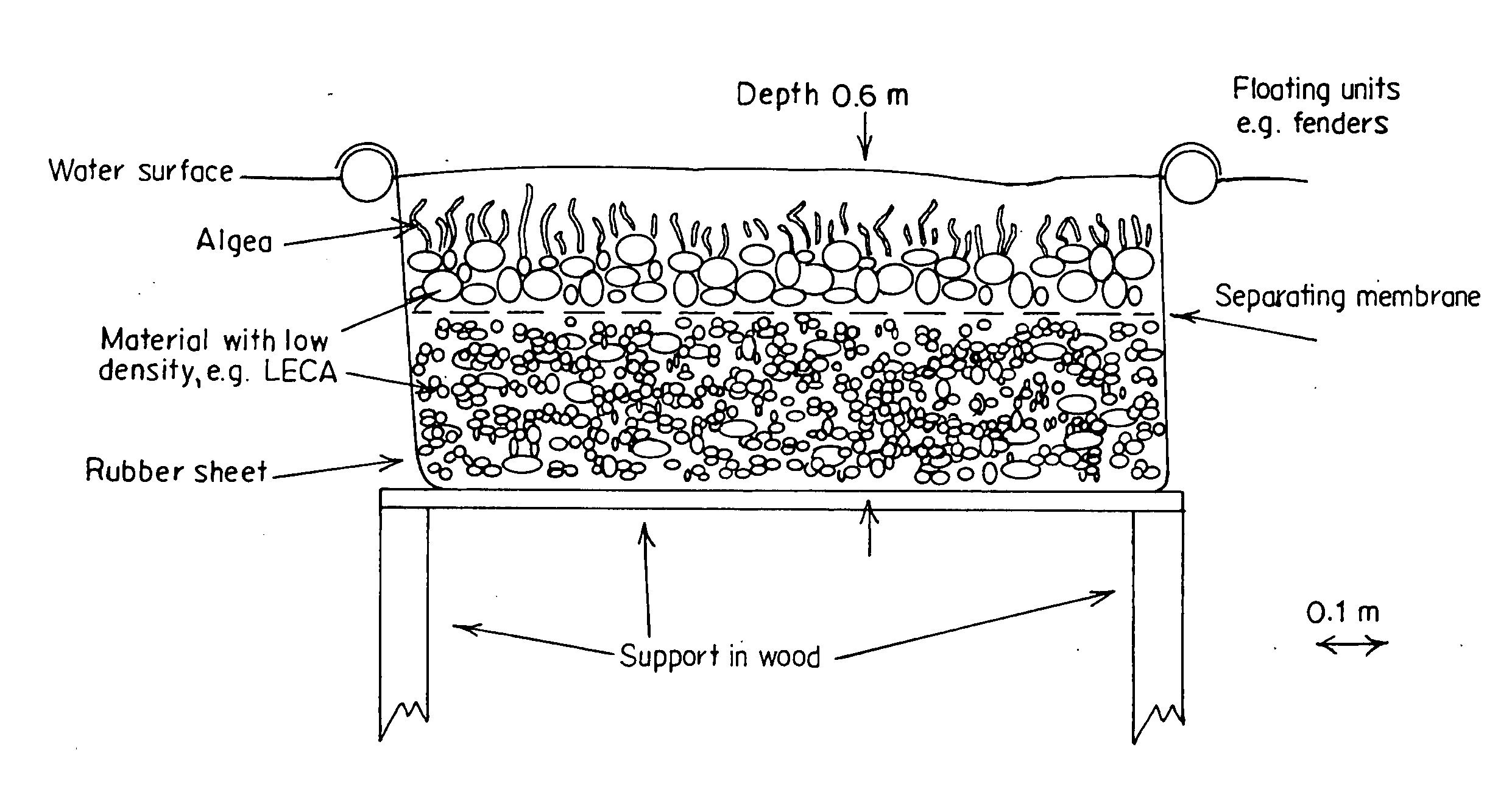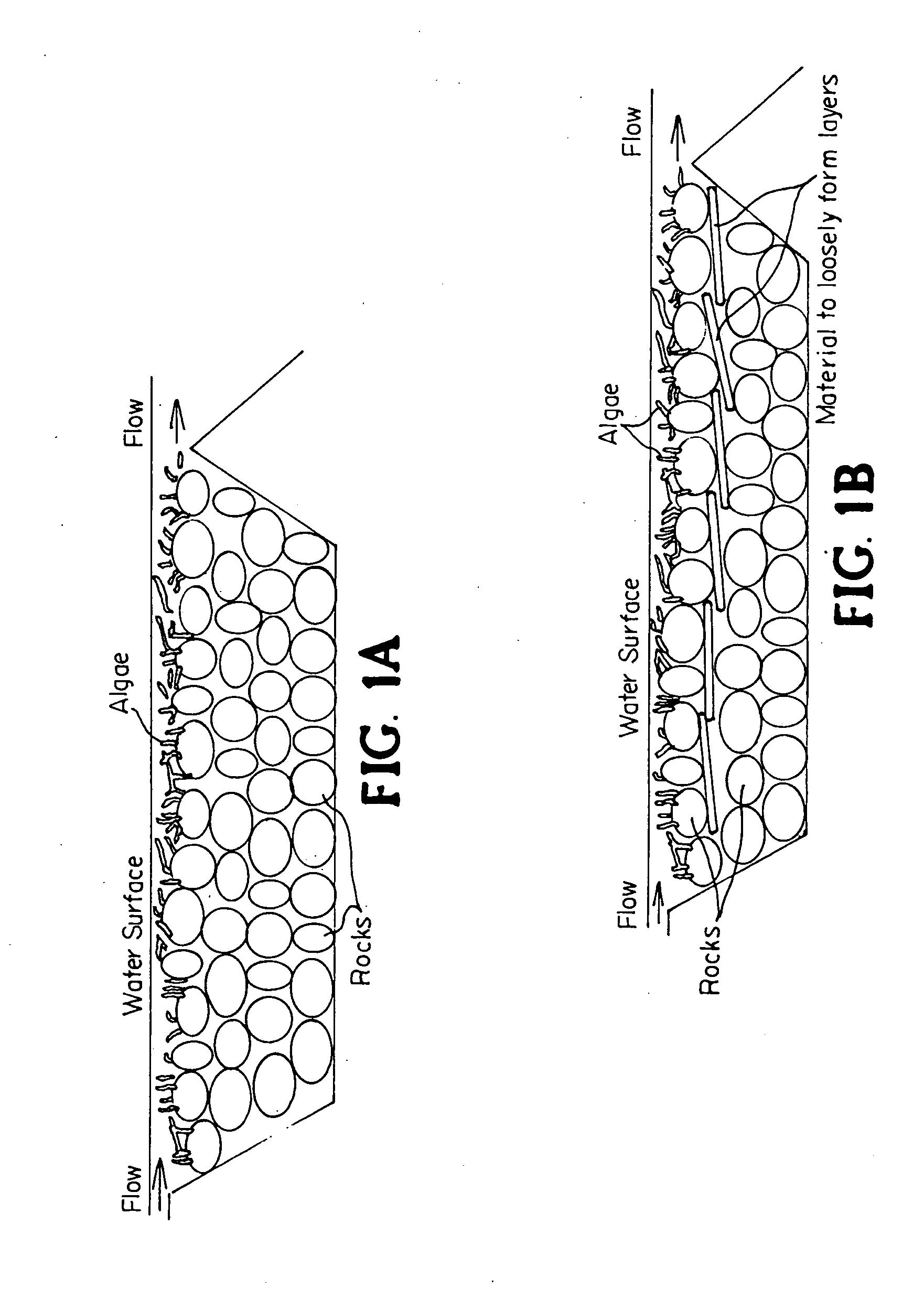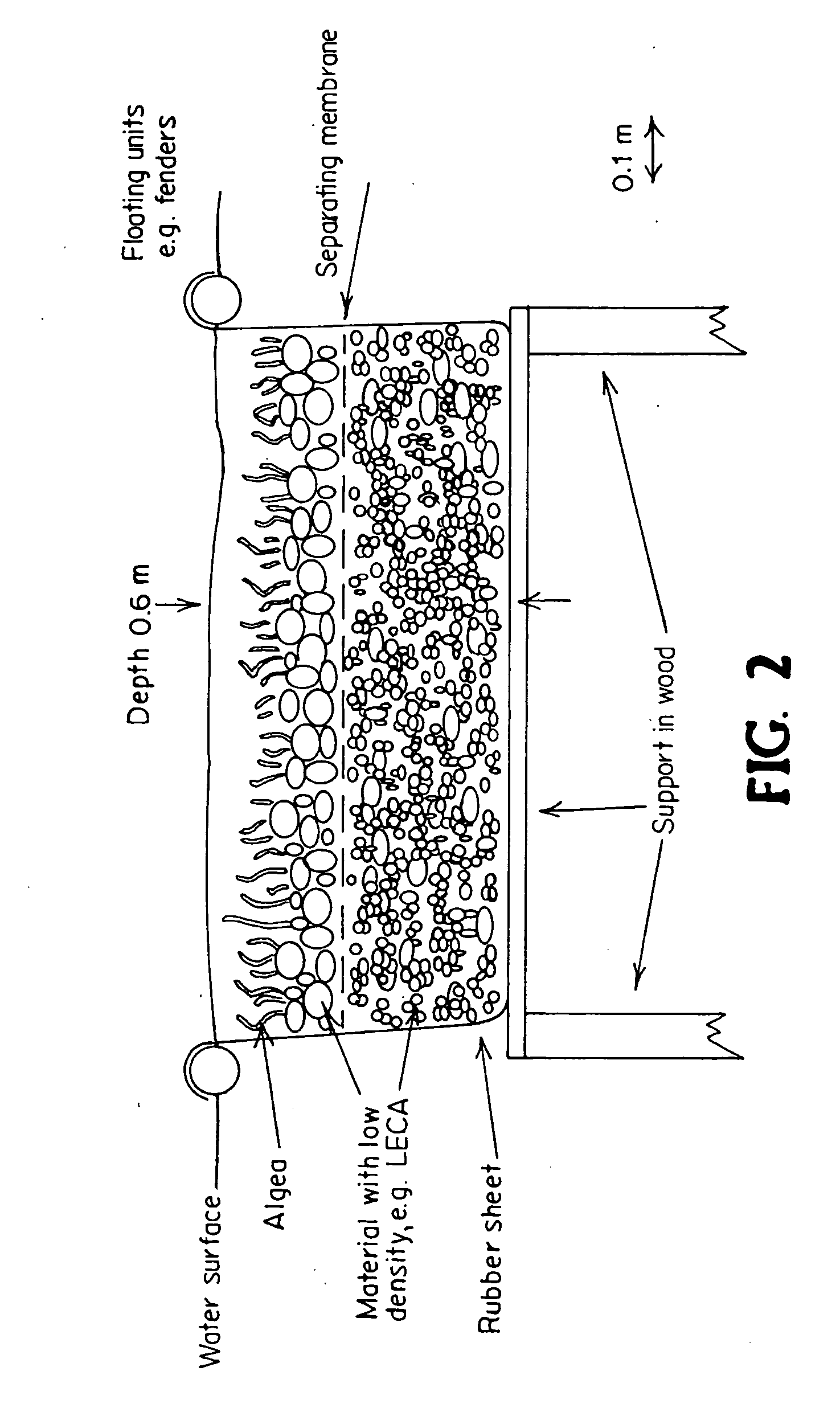Water treatment plant for combined biomass and biogas production
a biogas and water treatment plant technology, applied in water/sludge/sewage treatment, filtration separation, moving filter element filters, etc., can solve the problems of large water outlet affected by man, high cost and waste of sewage, and substantially degrade the biological content of sewage, so as to achieve easy harvesting/collecting
- Summary
- Abstract
- Description
- Claims
- Application Information
AI Technical Summary
Benefits of technology
Problems solved by technology
Method used
Image
Examples
example 1
A Medium-Size Wastewater Plant
[0080]The main aim of using this invention in a wastewater plant is to reduce the cost for the wastewater plant by reducing the pollutants in the water. The wastewater plant typically uses a combination of mechanical, chemical and biological methods to reduce the levels of nitrogen, phosphorus and biological oxygen demand (organic substances and nitrogen). These methods are very costly and by using this invention the cost may drastically be reduced. This invention may be added / complemented to the wastewater plant, typically after the treatment at the wastewater plant, but it may also be applied into intermediate steps in the systems. The wastewater plant may then reduce their efforts in their conventional system and this invention may “take over” a larger part of the cleaning process. No structural modifications are needed in the conventional system.
[0081]A shallow basin with a surface area from a few hundreds of square meters to a hectare is required. ...
example 2
Runoff Waters from Agricultural Land
[0088]The heavy use of nutrients in agricultural activities causes major leakage (of nutrients such as nitrogen and phosphorus) to the landscape and recipients. Much of these nutrients are eventually transported in streams in the landscape. This invention is very suitable for, and easily applied, in such streams. The system of the invention can be constructed for a minimum environmental impact and alteration of natural occurring streams. It may be divided in several separated parts if desired and have little or no effect on the wildlife. For example, a parallel pond can be constructed next to the stream with an inlet upstream and an outlet downstream.
[0089]As in example 1, a two-layer system, with a membrane in between the layers, is constructed. The membrane might probably need to be thicker than in example 1, as the water from streams and runoff areas usually is more diluted and contains less oxygen-consuming particles. In order to calculate or ...
PUM
| Property | Measurement | Unit |
|---|---|---|
| depth | aaaaa | aaaaa |
| height | aaaaa | aaaaa |
| height | aaaaa | aaaaa |
Abstract
Description
Claims
Application Information
 Login to View More
Login to View More - R&D
- Intellectual Property
- Life Sciences
- Materials
- Tech Scout
- Unparalleled Data Quality
- Higher Quality Content
- 60% Fewer Hallucinations
Browse by: Latest US Patents, China's latest patents, Technical Efficacy Thesaurus, Application Domain, Technology Topic, Popular Technical Reports.
© 2025 PatSnap. All rights reserved.Legal|Privacy policy|Modern Slavery Act Transparency Statement|Sitemap|About US| Contact US: help@patsnap.com



